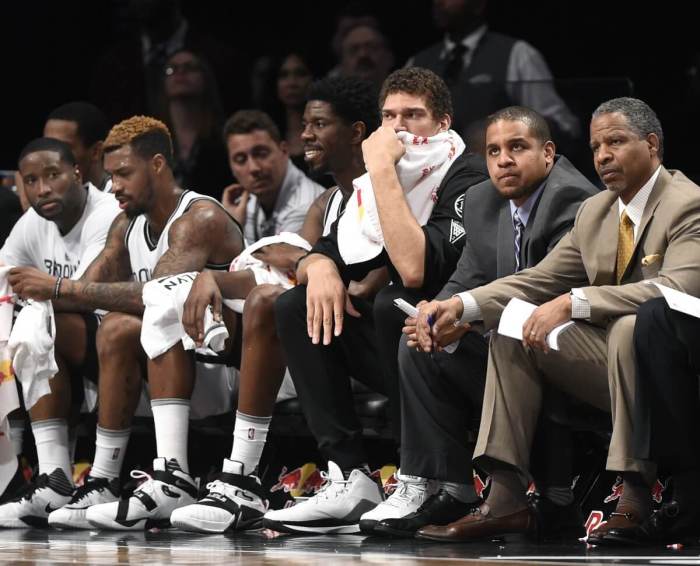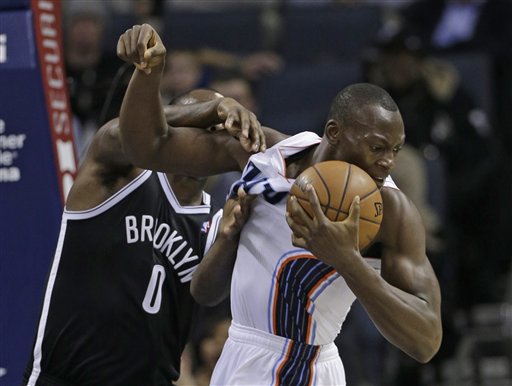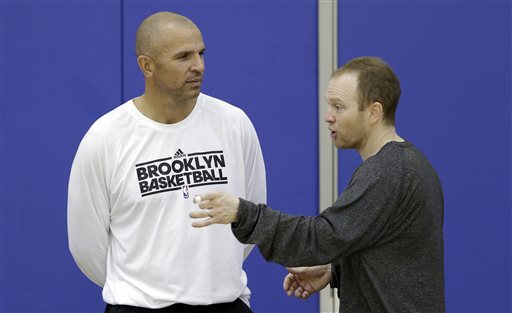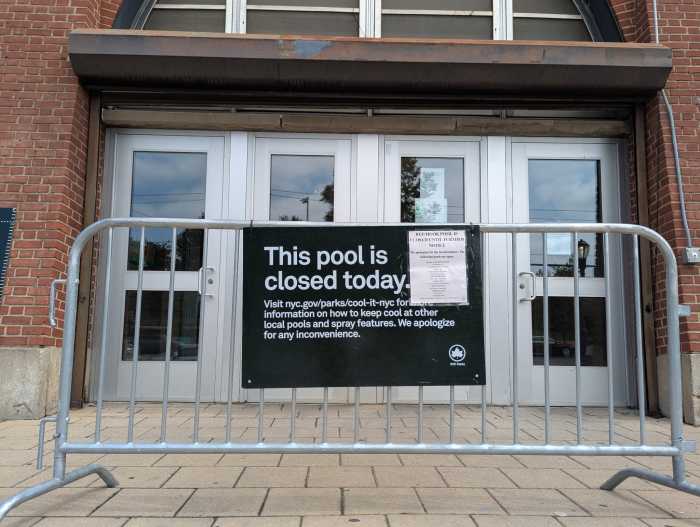While the Nets 0-8 start to the season is a pretty definitive indicator as to how the rash of injuries is affecting the team’s performance, there are some advanced statistics out there that really hammer home what happens when a team is forced to either play guys out of position, or give starter’s minutes to players who are career back-ups or in some cases, career-12th-men.
One of the more interesting statistics available on the great statistical site 82games, is PER (Player Efficiency Rating) differential. 82games looks at a player’s PER while playing a specific position, and then also provides PER data for opposing player’s slotted at that same position. In other words, when Brook Lopez is playing center, he currently has a PER of 20.7, while opposing centers have a PER of 13.1 while Brook is on the floor, creating a PER differntial of + 7.6 (which is very good). I like looking at this metric because in addition to giving you an idea of how a guy stacks up at a certain position, it also provides some insight about his defensive abilities against other player’s at that position.
And for those of you who have not bought in to the advance statistics thing for the NBA yet, a quick refresher: PER is the overall rating of a player’s per-48 minute statistical production including scoring, shooting percentages, rebounding, assists, turnovers and other metrics. A PER of 15.0 is considered the mean, with anything above 15 being above average, and below 15 is obviously below average. You’ll find that Sebastian and I throw PER around a lot on this site, so if you never knew what we were talking about, there you go.
So in many cases in the early-part of this Nets season, the PER differential for some players is just alarmingly awful. After the jump, let’s break this down into two groups, players playing out of position and players getting big minutes who in a perfect world, would be riding the bench or inactive.
Playing out of Position
In the early part of this season, we’ve seen Bobby Simmons at power forward and Terrence Williams at point guard and power forward, as two of the most obvious cases of player’s playing out of position. Simmons, who has played SF most of his life, seems a bit undersized to handle the four, and the PER differentials support that. While playing PF, Simmons has posted a PER of 0.7 while opposing PFs have a PER of 15.2, good for a differential of -14.5.
This is noteworthy for two reasons. First, it’s almost inconceivable for an NBA player to have a PER that low. A lot of that has to do with just how terribly Simmons has been shooting to start the season. He has en effectieve field goal percentage (which takes into account three-point goals) of 19 percent. That’s what a bunch of 0-7 and 1-8 nights will do for you while playing the four. He’s averaging 8.9 points per 48 minutes and 7.9 fouls.
On the positive side, opposing PFs have a PER of 15.2 when Simmons is at the position. That means he really hasn’t been torched by anyone. Opposing PFs have an eFG of 44 percent which is acceptable and are averaging 17.7 points per 48 minutes. They’re averaging only 3.9 fouls per 48 minutes, which is indicative of how far away from the basket Simmons plays for the position. Simmons is surprisingly outrebounding them 11.8 to 9.9 per 48 minutes, so I guess when Lawrence Frank says he likes Bobby’s rebounding at the spot, he’s not out of his mind. Still, a differential of -14.5 is tough to hide, especially when Simmons is playing 14 percent of the team’s total minutes at the position.
As for Terrence Williams, his versatility was a key in the Nets drafting him as high as they did, and he’s played some minutes at every position but center so far. However, his PER differentials show that TWill is most apt at the SF slot, and he’s a liability at the PG and PF positions.
TWill has played 4 percent of the team’s minutes at the PG so far this year and owns a 14.9 PER there, with 17.3 points, 14.4 rebounds, 5.8 assists and a 43 eFG%, per 48 minutes. For a rookie, this isn’t so bad, though he is also turning the ball over 5.8 times per 48 minutes. However, opposing PGs have a PER of 42.5 right now which is astounding. They’re averaging 31.7 points, 11.5 rebounds, 5.8 assists, zero turnovers and an eFG of 90 percent. Simply put, TWill is just not cutting it on the defensive end against opposing PGs if he’s allowing them to shoot 90 percent, score at will, while not being able to disrupt them with any steals or deflections that lead to TOs. At PF, where Williams has also played 4 percent of the team’s minutes, he has a PER of 2.1. He’s averaging 22.3 points and is shooting an eFG of 44 percent, which sound good, but he’s only rebounding 6.4 per 48 minutes and is averaging a ridiculous 15.9 fouls. On the flip side, oppoenents havea PER of 33.3, averaging 25.5 points and shooting a perfect 100 eFG percentage. Similar to Simmons, TWill seems to be undersized for the position, and the high foul rate, and his inability to stop a single shot indicates that he really can’t handle opposing fours.
Backups Playing Like Starters
Long-term injuries to starters Devin Harris and Yi Jianlian have forced some role players into starters minutes. For example, Rafer Alston, who’s played 68 percent of the team’s total minutes so far. Granted, Alston, was actually a starter in Orlando last year, but his role coming into New Jersey this season was to back-up Devin Harris. Despite Rafer’s jump in minutes, the quality of his play reflects that of a second-stringer. Rafer is putting up a meager 9.2 PER running the point, averaging 15.2 points, 7.6 assists and an eFG of 47 percent, per 48 minutes. Opposing point guards have a PER of 23.9, averaging 27.8 points, 6 assists and an eFG of 61 percent. When you consider that Harris had one of the highest PERs for any PG last season, the current PG PER differential of -14.8 with Rafer on the floor 68 percent of the time really hurts the Nets.
Eduardo Najera, who I actually believe has done a decent job considering the circumstances, is another one who’s being forced into more minutes. Though his spike in playing time has only been in the past week, his PER at the PF position is 14, which isn’t terrible. However, opposing PFs have a PER of 31.3, averaging 26.3 points, 7.8 rebounds, 1.7 blocks and an eFG of 73 percent per 48 minutes. Another area where the differential is stark regarding Najera’s play at the four is personal fouls. Najera is averaging 8.4 fouls per 48 minutes, indicating he is having a hard time on the defensive end without resorting to hacking guys. Opposing FGs are only fouling 1.7 times per 48 minutes. This is a little odd, since Najera has attempted 50 percent of his field goals from close or inside, but he’s clearly not being aggressive enough to draw contact, or he’s just getting a bunch of non-calls.
There are some instances where our fill-ins have done an admirable job. Josh Boone, who was used primarily as a backup center last year, has a PER of 16.7 while playing PF this season, including 16.6 points, 15.8 rebounds and an eFG of 56 percent per 48 minutes. Opposing fours have a PER of 19.4, which still creates a negative differential, but not such a dramatic one as we’re seeing with Alston, Najera, TWill and Simmons.
One bench player who actual has a positive differential from his opponent? Trenton Hassel, who rose from the inactive list, to the starting lineup the past few games. At the SF, Hassell has a PER of 13.5, while opposing SFs have a PER of 13.4. It’s only a differential of +.1, and Hassell is still exhibiting below average efficiency for the position, but progress is progress right?


















